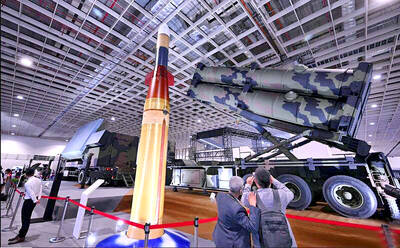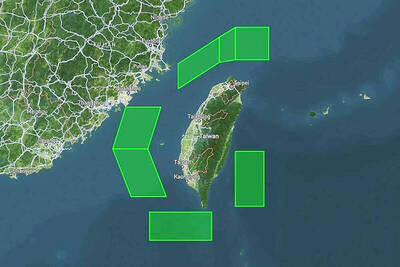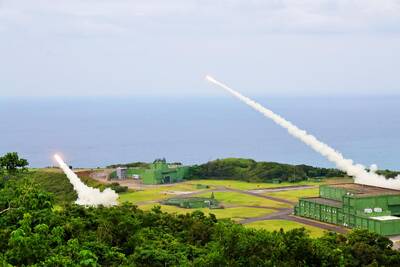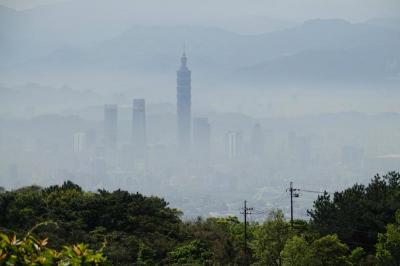The government is to invest NT$72.7 billion (US$2.38 billion) in urban and rural infrastructure over the next two years, sources with knowledge of the matter said.
If passed, the urban and rural infrastructure plan would be the single largest item in the special budget allocated to the second phase of the Forward-looking Infrastructure Development Program, the sources said, speaking on condition of anonymity.
Premier William Lai (賴清德) has already approved a NT$227.1 billion budget for the second phase of the program and the proposed budget is to be sent to the Legislative Yuan for review next month, they added.
The first phase of the program — which runs from September last year to December this year — received NT$107.1 billion, NT$35 billion of which was allocated to urban and rural infrastructure.
The second phase — from next year to 2020 — is to include NT$12.2 billion toward green energy infrastructure development, NT$27.8 billion for digital infrastructure, NT$59.3 billion for water infrastructure, NT$42.2 billion for railway development, NT$72.7 billion for urban and rural infrastructure and NT$12.9 billion toward childcare, food safety and human resource development, the sources said.
As part of the new plan, the government is to spend NT$3 billion each year for two years to revitalize municipal centers, the sources said.
A total of NT$10.6 billion is to be allocated next year and NT$10.4 billion in 2020 to improve road quality, reduce the need for road repairs, improve road safety and improve the overall aesthetics of thoroughfares, bringing the two-year total to NT$21 billion, they said.
The government plans to spend NT$4.1 billion per year for two years to develop locally oriented industrial parks, they said.
The government also plans to spend NT$3.5 billion next year and NT$2.9 billion in 2020 to create sports and leisure facilities, such as recreation centers, swimming pools and bicycle paths, they said.
It is to allocate NT$2.4 billion next year and NT$2.2 billion in 2020 to developing public service centers, including for long-term care, they added.
Under the plan, the government would also spend NT$5.8 billion over the next two years on seismic strengthening and reconstruction of publicly owned buildings, they said.
The government would invest NT$800 million next year and NT$4 million in 2020 to develop a Hakka Romantic Avenue along Provincial Highway No. 3 as part of its efforts to preserve and promote Hakka culture, they said.

Taiwan is to commence mass production of the Tien Kung (天弓, “Sky Bow”) III, IV and V missiles by the second quarter of this year if the legislature approves the government’s NT$1.25 trillion (US$39.78 billion) special defense budget, an official said yesterday. Commenting on condition of anonymity, a defense official with knowledge of the matter said that the advanced systems are expected to provide crucial capabilities against ballistic and cruise missiles for the proposed “T-Dome,” an advanced, multi-layered air defense network. The Tien Kung III is an air defense missile with a maximum interception altitude of 35km. The Tien Kung IV and V

The disruption of 941 flights in and out of Taiwan due to China’s large-scale military exercises was no accident, but rather the result of a “quasi-blockade” used to simulate creating the air and sea routes needed for an amphibious landing, a military expert said. The disruptions occurred on Tuesday and lasted about 10 hours as China conducted live-fire drills in the Taiwan Strait. The Civil Aviation Administration (CAA) said the exercises affected 857 international flights and 84 domestic flights, affecting more than 100,000 travelers. Su Tzu-yun (蘇紫雲), a research fellow at the government-sponsored Institute for National Defense and Security Research, said the air

Taiwan lacks effective and cost-efficient armaments to intercept rockets, making the planned “T-Dome” interception system necessary, two experts said on Tuesday. The concerns were raised after China’s military fired two waves of rockets during live-fire drills around Taiwan on Tuesday, part of two-day exercises code-named “Justice Mission 2025.” The first wave involved 17 rockets launched at 9am from Pingtan in China’s Fujian Province, according to Lieutenant General Hsieh Jih-sheng (謝日升) of the Office of the Deputy Chief of the General Staff for Intelligence at the Ministry of National Defense. Those rockets landed 70 nautical miles (129.6km) northeast of Keelung without flying over Taiwan,

A strong continental cold air mass is to bring pollutants to Taiwan from tomorrow, the Ministry of Environment said today, as it issued an “orange” air quality alert for most of the country. All of Taiwan except for Hualien and Taitung counties is to be under an “orange” air quality alert tomorrow, indicating air quality that is unhealthy for sensitive groups. In China, areas from Shandong to Shanghai have been enveloped in haze since Saturday, the ministry said in a news release. Yesterday, hourly concentrations of PM2.5 in these areas ranged from 65 to 160 micrograms per cubic meter (mg/m³), and pollutants were